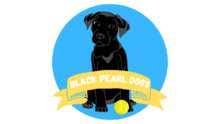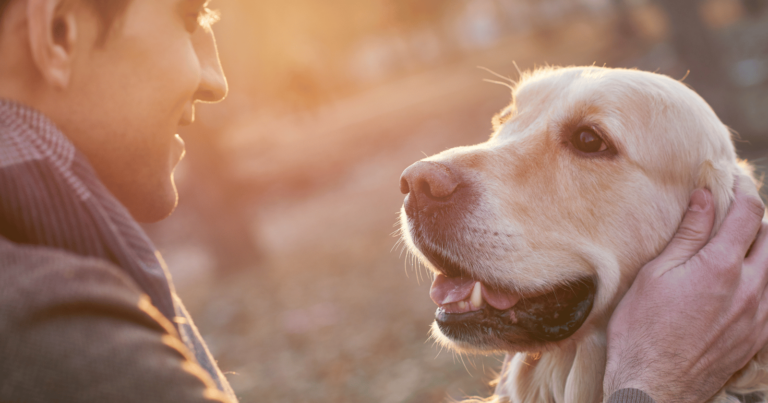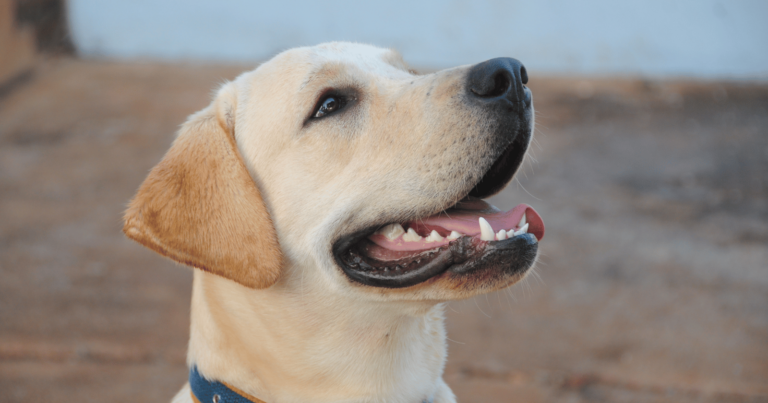Dog breeds are as diverse as they come, with traits that range from the adorable to the downright intimidating.
But did you know that not all breeds are welcomed with open arms worldwide?
It’s true; certain breeds face restrictions and bans in various parts of the globe, primarily for safety reasons.
It may seem harsh, but these decisions often boil down to protecting people from potential harm.
Don’t worry, I’m not here to point fingers at any breed or fuel any doggy debates.
Rather, I’m here to shed some light on this matter.
So, let’s dive into the world of canine legislation and explore 10 dog breeds that are banned around the world for safety reasons.
1. American Pit Bull Terrier
These dogs often have a bit of a bad reputation, and it’s not entirely without reason.
The American Pit Bull Terrier is a breed that’s banned in many parts of the world, including places like the United Kingdom and Ontario, Canada.
The reason?
Well, it’s mainly for safety concerns.
These dogs are muscular, strong, and can be quite aggressive if not properly trained or socialized.
It’s these characteristics that have led to them becoming associated with dog-fighting, an illegal and cruel sport.
However, it’s important to remember that not all Pit Bulls are dangerous or aggressive.
Many of them are sweet-natured and loyal pets when given the right care and attention.
But unfortunately, due to the actions of a few, the entire breed often gets a bad rap.
As a result, many regions have decided to ban them for safety reasons.
2. Rottweiler

I’ll never forget the first time I came across a Rottweiler.
I was a young kid, and my neighbor had just gotten a Rottweiler puppy named Greg.
He was the cutest thing with his shiny black coat and those big brown eyes.
Fast forward a few years, and Greg had grown into an impressive and intimidating dog.
But to those who knew him, he was still the same gentle giant.
However, not everyone sees Rottweilers this way.
In fact, this breed is banned in certain parts of the world such as Ecuador, Ireland, and Portugal.
They’re known for their strength and protective nature, which can sometimes translate into aggressive behavior if they feel their family is threatened.
It’s sad to think that Greg’s breed is banned in some regions simply because of a reputation that doesn’t apply to all members of the breed.
But it’s a harsh reality in some parts of the world where safety precautions take precedence.
3. Tosa Inu
Now, here’s a breed that you might not have heard of, the Tosa Inu.
Originating from Japan, this breed is often referred to as the “Sumo wrestler of the dog world”.
Why?
Well, the Tosa Inu was originally bred for a sport known as dog sumo.
This involved dogs wrestling each other in a ring, a practice that has long since been banned.
These dogs are massive in size, and their history in fighting sports has led to a perception of them being potentially dangerous.
This has resulted in them being banned in countries like Denmark, Malta, and Norway.
Despite this history, many Tosa Inus are gentle and calm around their families.
However, the stigma associated with their past continues to affect how they’re viewed today.
4. Staffordshire Bull Terrier
Staffordshire Bull Terriers are known for their love of people and their energetic nature.
They’re often described as “nanny dogs” due to their affinity for children and their protective nature.
However, not everyone shares this positive view.
In regions like Miami, Florida, and parts of Australia, they’re unfortunately banned.
Much like the American Pit Bull Terrier, the Staffordshire Bull Terrier has often been associated with illegal dog-fighting practices.
This has created a perception of them being aggressive or dangerous.
Yet, many Staffordshire Bull Terrier owners would argue the opposite, insisting that these dogs are loving and gentle when raised in a caring environment.
Sadly, their reputation precedes them in many parts of the world, leading to these bans.
5. Dogo Argentino
Native to Argentina, the Dogo Argentino is a large, muscular breed initially bred for hunting big game such as wild boar and pumas.
With their strength and high prey drive, they’re certainly an impressive breed.
But these same characteristics have led to them being seen as potentially dangerous in some circles.
For this reason, the Dogo Argentino is banned in several countries, including the United Kingdom and New Zealand.
It’s a classic case of a breed being targeted because of their physical capabilities and not necessarily their temperament.
Many Dogo Argentino owners argue that with correct training and socialization, these dogs are no more dangerous than any other breed.
Related Stories from Black Pearl Dogs
Yet, their imposing appearance and hunting history have led to their ban in certain regions.
6. Presa Canario

The Presa Canario, a breed hailing from the Canary Islands, is a striking dog known for its size and muscular build.
They were originally bred for working livestock, which explains their strength and protective instincts.
However, these traits have also led to them being perceived as a threat in certain countries.
Places like Australia and New Zealand have chosen to ban the breed entirely.
It’s always heartbreaking to hear about an entire breed being banned.
Especially when you consider that many Presa Canarios are loyal and devoted pets, who, like any breed, can flourish under the right care and training.
Unfortunately, their natural protective instincts can escalate to aggression if not managed properly.
This potential risk has resulted in their ban in some regions, a decision that continues to spark debate among dog lovers worldwide.
7. Fila Brasileiro
I remember a time when I was out for a walk and came across a Fila Brasileiro.
Its sheer size and muscular build were enough to make anyone take a step back.
I was certainly taken aback, but I couldn’t help but admire this majestic dog.
The Fila Brasileiro, or Brazilian Mastiff, is a breed known for its tracking abilities and unmatched loyalty to its family.
However, they are also known for their wariness of strangers, a trait that has led to them being labeled as dangerous dogs.
Countries like the United Kingdom and Denmark have banned this breed due to these concerns.
It’s a tough pill to swallow when you see the potential these dogs have for being loving family pets.
But as with any dog, it’s crucial to understand the breed’s traits and ensure they receive the right training and socialization.
Without it, even the gentlest breeds can become problematic, let alone those with a natural inclination towards protectiveness like the Fila Brasileiro.
8. Czechoslovakian Wolfdog
Here’s a breed that challenges what we think we know about dogs.
The Czechoslovakian Wolfdog, as the name suggests, is a cross between a German Shepherd and a Carpathian wolf.
Yes, you read that right, a wolf.
You’d think that would make them dangerous and unpredictable, right?
Well, it’s not necessarily the case.
These dogs are known for their intelligence, stamina, and trainability.
But they also possess the independent nature of their wolf ancestors, which can make them challenging for inexperienced owners.
However, it’s not their behavior but their ancestry that has led to their ban in Norway.
It’s an interesting case where the assumption of danger is based on their lineage rather than their temperament.
It just goes to show that when it comes to dog breeds, things aren’t always as they seem.
9. Boerboel
Meet the Boerboel, a large and powerful breed that hails from South Africa.
These dogs were initially bred to guard homesteads, a role that required both strength and vigilance.
Given their size and protective nature, it’s not surprising that they’ve made the list.
In Denmark, for example, Boerboels are banned due to their potential to be dangerous.
However, it’s essential to note that Boerboels are known to be obedient, reliable, and intelligent.
With proper training and socialization, they can make excellent family pets.
Still, their formidable appearance and protective instincts have led to them being viewed as a potential safety concern in some regions of the world.
10. Akita

Lastly, we have the Akita, a breed known for its loyalty and devotion.
These dogs are fearless and protective, traits that have made them popular in their native Japan.
However, these same characteristics have led to their ban in countries like Singapore.
Akitas are known to be wary of strangers and can become aggressive if they feel threatened.
But here’s the key thing you should know: no breed is inherently dangerous.
All dogs, regardless of their breed, can be loving and safe companions with the right training, socialization, and care.
It’s a crucial perspective to remember when discussing banned breeds around the world.
Reflecting on the bigger picture
Looking at these bans, it becomes clear that perception often plays a significant role in how we view different dog breeds.
Fear and misconceptions can sometimes overshadow the potential for love and companionship that these dogs can offer.
Yet, it’s essential to remember that every dog, regardless of its breed, has the capacity to be a loving and loyal pet.
The key lies in responsible ownership, proper training, and socialization.
It’s not the breed that makes a dog dangerous; it’s the circumstances they are raised in and the treatment they receive.
These factors can influence a dog’s behavior far more than their genetic makeup.
Perhaps the most important takeaway from this discussion should be a shift in perspective – from blaming certain breeds for their perceived danger to understanding the deeper issues at play.
Because at the end of the day, every dog deserves a chance to be understood, loved, and respected for what they truly are – man’s best friend.














